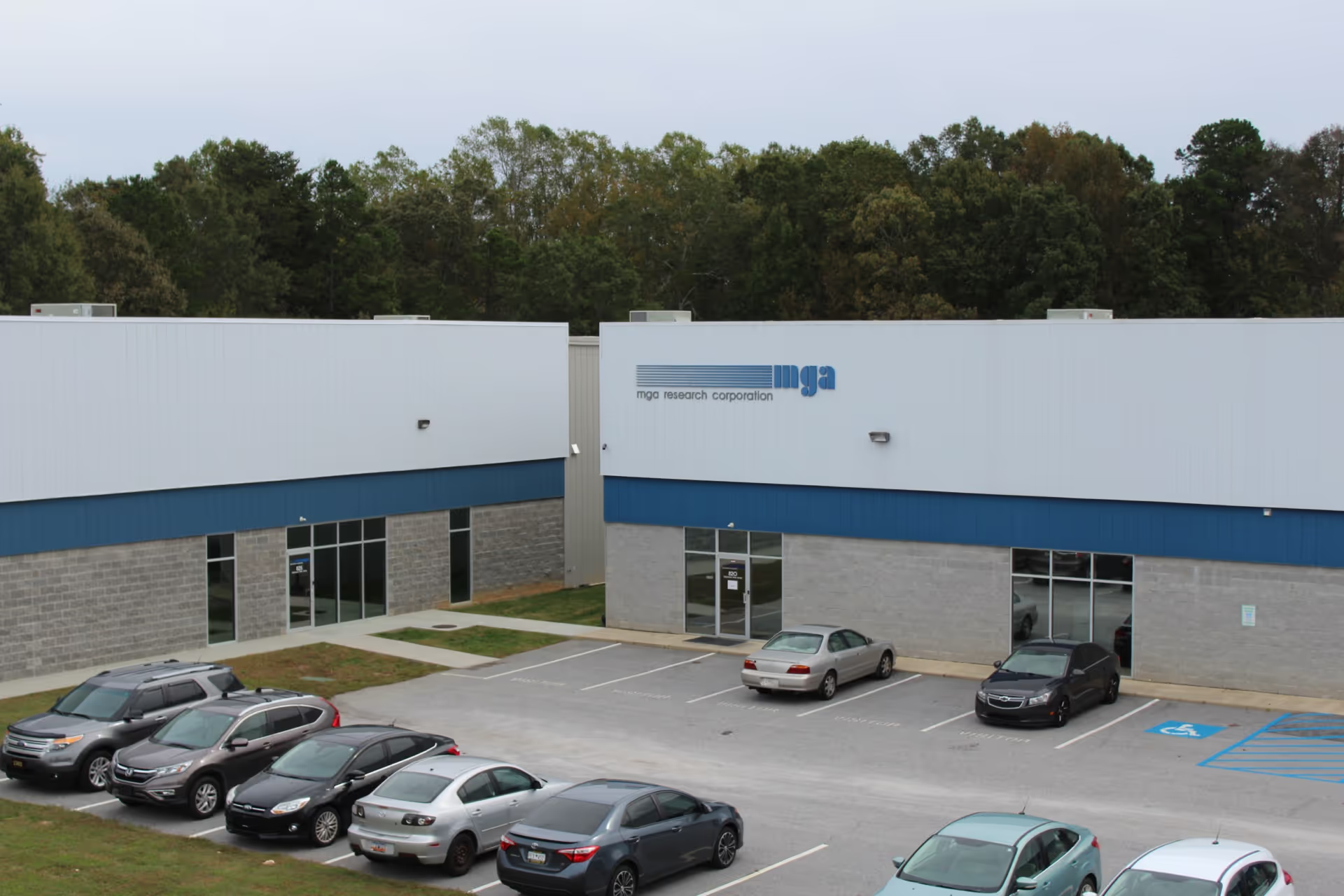
Materials Testing
MGA Research Corporation provides comprehensive material testing services for the automotive industry, evaluating both physical and aesthetic properties of interior and exterior materials to ensure quality, durability, and compliance with industry standards.
Quick Overview

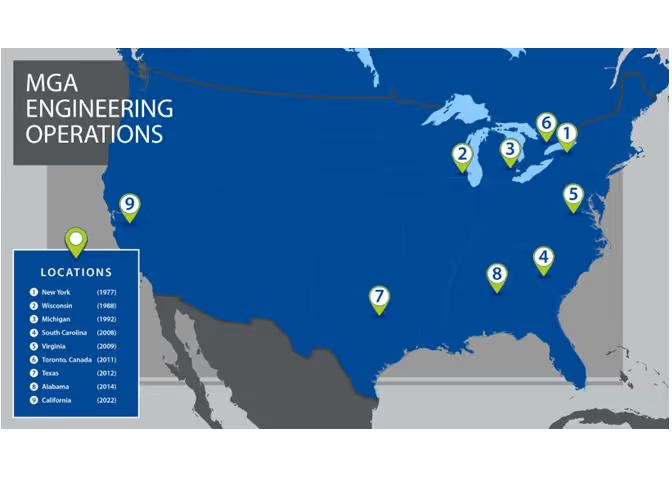
Multi-Facility Network
Our ISO 17025 accredited laboratories are located throughout North America offering localization opportunities and rapid response times
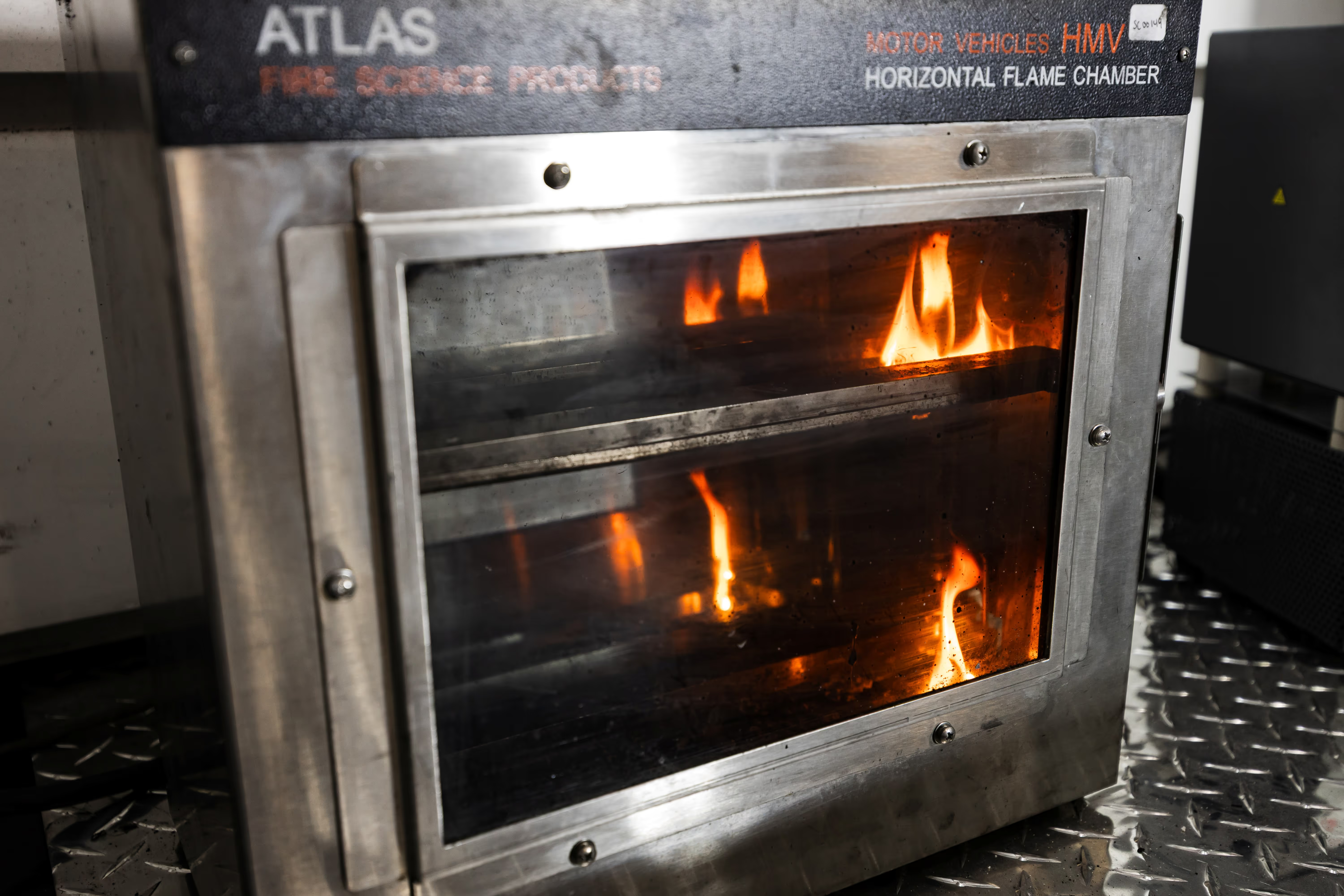
Flammability
Determine a material’s resistance to burning to FMVSS 302 and OEM standards
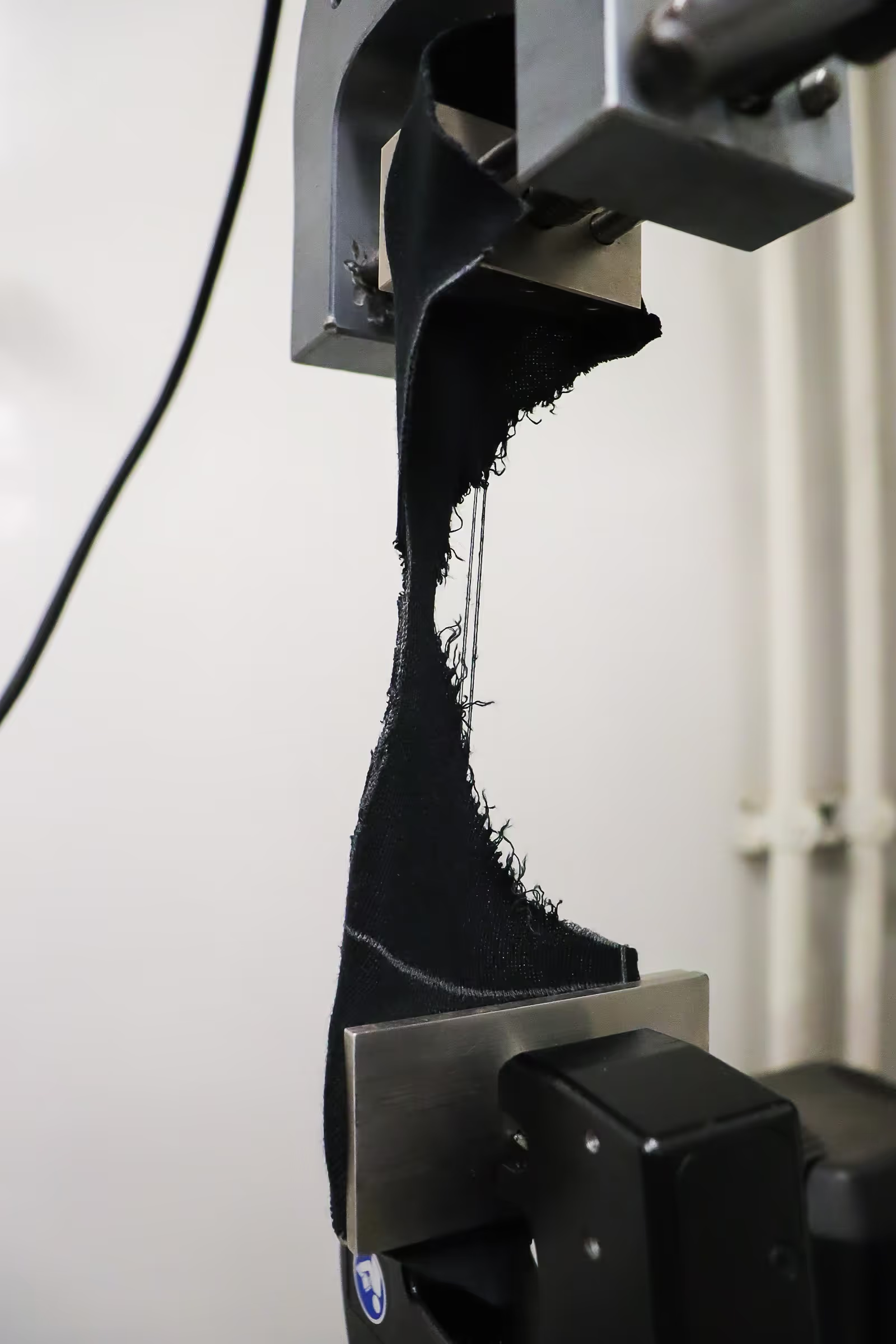
UTM / Physical Property Testing
Determine a variety of properties relating to tensile, adhesive, flexural, and compressive strength

Material Property
Determine properties specific to a material through tests such as FTIR, melt flow, and density
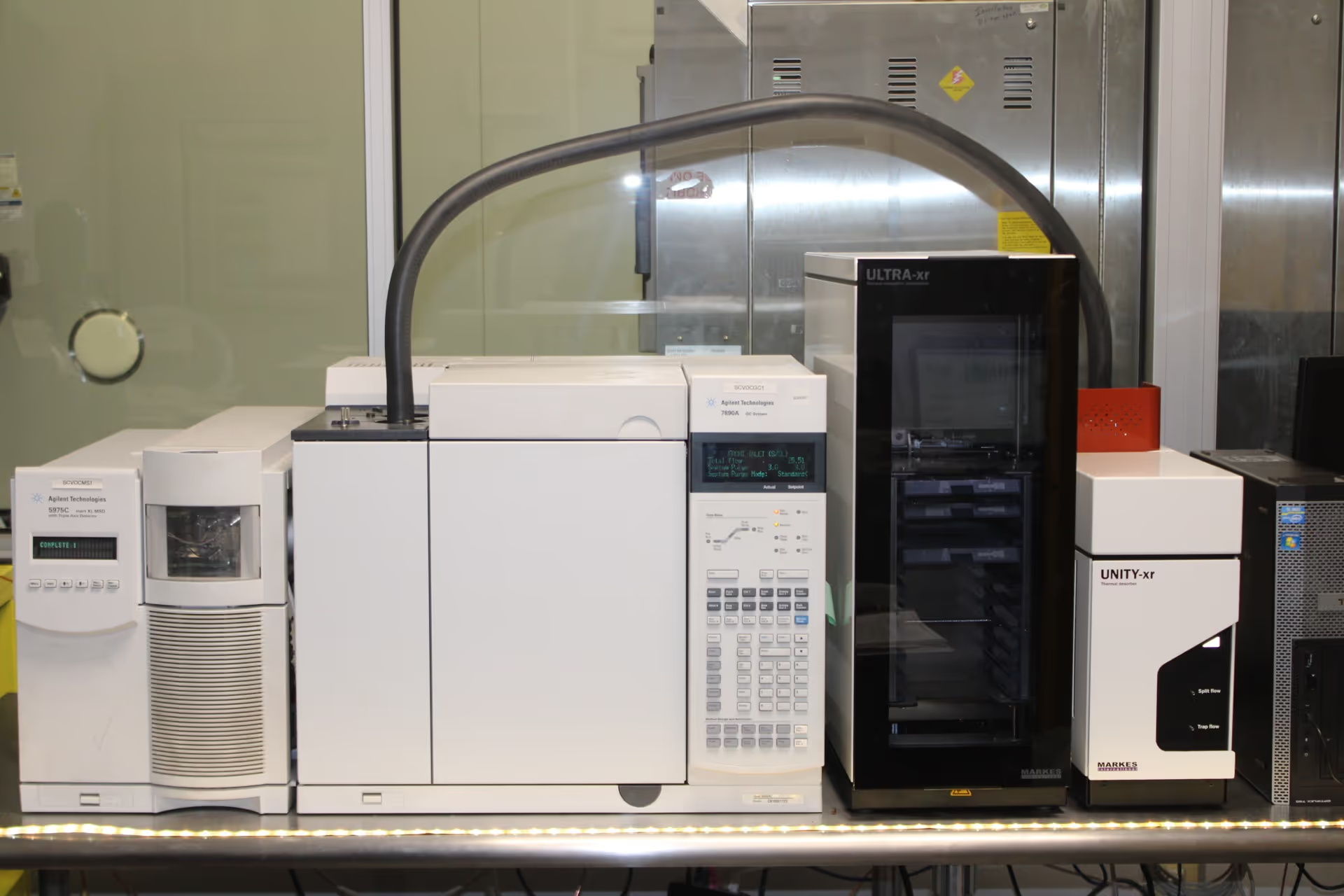
Emissions - VOC/Fogging/Odor
Quantitatively and subjectively determine off gassed chemicals from materials
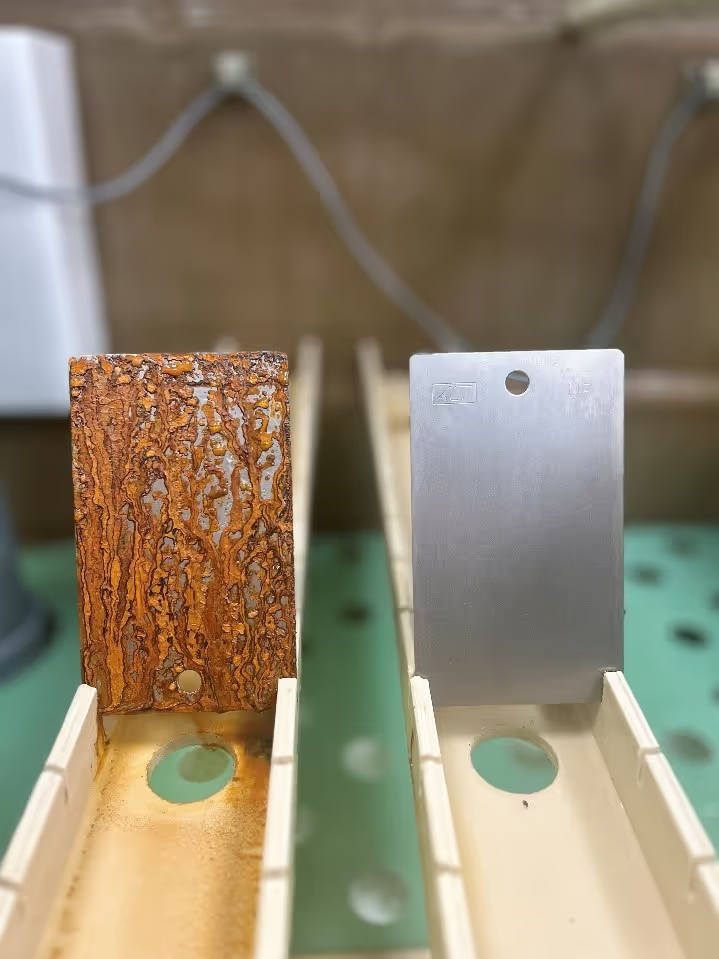
Corrosion
Evaluate components’ rust resistance when exposed to salt solution
.avif)
Solar Simulation
Evaluate a material's reaction to artificial solar exposure using either xenon or carbon arc irradiation
.avif)
Aesthetic Property
Determine the effect of simulated wear, abrasion, scratch, and mar on a material
Why Test Materials?
Material testing is a rapidly growing sector of the testing industry due to the increasing quality and care of the materials used in a variety of industry applications. As OEM’s continue to develop in-depth standards for their products, MGA seeks to maintain its position in the industry as a leading provider for material testing needs.
Material testing provides information on a variety of material properties, which can be generally categorized as either physical or aesthetic. Physical properties will provide information on the characteristics of the material that may answer the following questions:
- What forces can the material withstand under various conditions?
- How do the material’s properties react to changes in temperature, humidity, and pressure?
- What is the material’s ability to resist chemical exposures?
Aesthetic properties, however, may answer questions such as:
- How does the material's appearance change over time or due to environmental exposure? For example:
- Color
- Gloss
- Definition
- Does the appearance of the material degrade throughout the expected use of the product?
- Are all materials within the specified requirements for quality control?
MGA Advantage
Boasting five laboratories and expertise across a multitude of unique specifications, MGA offers significant benefits to its clients.
- Comprehensive testing capabilities with a wide range of testing services across multiple material specifications
- State-of-the-art facilities featuring advanced laboratories equipped with cutting-edge technology
- Expertise and experience backed by years of industry experience and knowledge
- Customized testing solutions offering flexible testing programs to meet specific project requirements
- A2LA-Accredited and certified labs ensuring accuracy and quality of testing
- Fast turnaround times with efficient processes and multiple labs helping customers meet tight deadlines.
- Proven track record for delivering reliable and consistent testing results, making it a trusted partner for materials testing needs.
Physical Property Testing
MGA offers a wide variety of physical testing capabilities, including Universal Testing Machines (UTMs) for non-hydraulic force evaluations up to 150kN. These tests can be performed on samples that are in any stage of development, from raw resins to finalized products. Not only can MGA perform testing under standard conditions, but it can also be performed after environmental exposures ranging from -40°C to 300°C, as well as up to 100% relative humidity. In order to provide quality data on the physical limitations of materials, MGA performs some of the most commonly found physical tests below:
Tensile and Compression Testing

Tensile testing is a critical process in evaluating the mechanical properties of automotive materials, such as metals, alloys, composites, and plastics. It involves applying a controlled tensile (pulling) or compression force to a specimen until it fractures/deforms, measuring properties like tensile strength, compressive strength, yield strength, elongation, and Young's modulus. In the automotive industry, these evaluations help ensure materials can withstand the stresses and strains encountered during vehicle operation, such as those from collisions, acceleration, and braking. This testing is essential for material selection and quality control, ensuring components are strong, durable, and lightweight to enhance vehicle safety and performance. MGA also offers extensive capabilities for foam testing such as indentation force deflection and hysteresis loss per ASTM D3754.
Adhesive Strength and Adhesion Testing
Adhesive strength testing is essential for evaluating the bonding performance of adhesives used in automotive materials, which are increasingly employed to join various components made from metals, plastics, and composites. This testing measures the force required to separate bonded surfaces, providing data on properties like peel strength, shear strength, and tensile strength of the adhesive joints. In the automotive industry, the results help engineers optimize adhesive formulations and application methods, ensuring safe, durable, high-performance assemblies and strong, reliable adhesive bonds that are crucial for maintaining structural integrity, reducing vehicle weight, and improving crash energy management.
Similarly, adhesion testing evaluates the strength and durability of bonds between coatings, paints, adhesives, and their respective substrates, such as metals, plastics, and composites. This testing determines the ability of a coating or adhesive layer to remain attached to the underlying material under various conditions, including mechanical stress, thermal cycling, moisture, and environmental exposure.
Flexural Testing
Flexural testing, or bend testing, is a vital method for assessing the flexural strength and stiffness of automotive materials, including metals, composites, and plastics. This test involves applying a load to the center of a material specimen supported at both ends until it bends or breaks, measuring the material's resistance to deformation under bending stress.
Charpy/Izod Impact
Charpy and Izod impact testing are critical methods for assessing the impact resistance and toughness of automotive materials, such as metals, plastics, and composites. These tests involve striking a notched specimen with a pendulum hammer and measuring the energy absorbed by the material during fracture. The Charpy test places the specimen horizontally, while the Izod test positions it vertically, with the notch facing the striking direction. Testing can be performed using both notched and unnotched variations.
Melt Flow Index (MFI)
Melt Flow Index (MFI) testing is a crucial method for evaluating the flow characteristics of thermoplastic polymers used in automotive materials. This test measures the rate at which a molten polymer flows through a specified die under a defined load and temperature, providing an indication of the material's viscosity and processability. In the automotive industry, MFI testing is essential for ensuring that thermoplastic materials, such as those used in interior trims, dashboards, and under-the-hood components, can be easily molded and extruded into complex shapes with consistent quality. The results help engineers and manufacturers select the right polymer grades for specific application.
Flammability
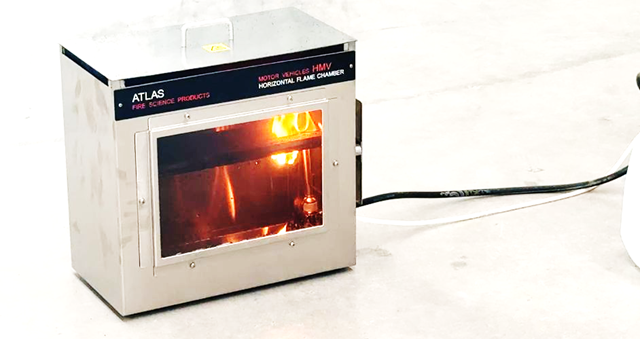
Flammability testing is a critical process in evaluating the fire resistance and safety of automotive materials, such as fabrics, plastics, foams, and composites used in vehicle interiors and components. This testing assesses how materials react to exposure to flames or heat, including ignition resistance, burn rate, flame spread, and smoke generation. In the automotive industry, flammability testing is essential to ensure that materials meet safety standards and regulations, including FMVSS 302, minimizing the risk of fire hazards in the event of accidents, electrical faults, or other ignition sources.
Volatile Organic Compound (VOC)
Volatile organic compound (VOC) testing measures the amount of VOCs that evaporate from materials like plastics, adhesives, foams, and textiles under elevated temperatures and condense on cooler surfaces. Many methods to improve the quality and efficiency of the production process of synthetic materials may inadvertently involve compounds that are harmful for human exposure. For example, an increase in the concentration of adhesive may provide a stronger bond for a leather, but simultaneously risks introducing unsafe concentrations of airborne compounds. While these compounds may not be found at ambient conditions, as temperatures rise they may become released (referred to as “offgassing”) and become inhospitable for human interaction. Through VOC testing, MGA is able to simulate the conditions that stimulate this offgassing, allowing the concentrations of the airborne compounds to be measured, ultimately to ensure that they are within the allowable concentrations for human interaction.
Specific Gravity
Specific gravity testing is a method used to determine the density of automotive materials relative to the density of water, providing insight into the material's weight and suitability for specific applications in vehicle design.
Cyclic Corrosion/Salt Fog

Cyclic corrosion and salt fog testing are essential methods for assessing the durability and corrosion resistance of automotive materials, particularly metals, coatings, and surface treatments exposed to harsh environmental conditions. These tests simulate real-world exposure to elements such as salt, humidity, temperature fluctuations, and other corrosive agents that vehicles encounter, especially in coastal regions or areas with heavy road salt use. Salt fog testing involves exposing materials to a mist of saltwater in a controlled environment to accelerate corrosion processes, while cyclic corrosion testing alternates between different conditions, such as wet, dry, and humid cycles, to more closely replicate natural weathering. Common standards for corrosion resistance are ASTM B117 and ISO 9227.
Aesthetic Property Testing
MGA also provides an array of solutions to evaluate a material’s ability to maintain its aesthetic integrity over its lifetime of expected use. While MGA possesses the capability to perform this testing on fully finished products, this testing is typically performed on the component level in order to evaluate the finer production details that constitute the overall appearance. The following sections will highlight the variety of testing MGA provides.
Abrasion and Wear Resistance

Abrasion and wear resistance testing are essential methods in evaluating a material's ability to resist surface damage from mechanical friction or human contact. These tests can simulate a multitude of conditions, such as: scratching, scuffing, erosion, rubbing, and scarping. These tests are crucial for materials used in various vehicle components, including interior surfaces (like seats, dashboards, and carpets), exterior parts (like body panels and coatings), and mechanical elements (such as gears, bearings, and tires). By simulating real-world conditions, abrasion and wear testing provides valuable data on how materials will perform over time.
MGA offers multiple types of abrasion resistance and can produce custom setups if desired. The most common variables for these tests are number of cycles, load applied to sample, presence of water/chemicals, and test speed. Evaluations are typically visual ratings, but other specific evaluations such as mass loss of sample can be performed.
- Linear abrasion
- Rotary abrasion
- Wyzenbeek abrasion
- Washability
- Crocking
- Martindale
- Bally flex
- Pinch Fold
- Cold Cracking
Scratch and Mar Resistance
Similar to abrasion testing, scratch and mar resistance testing evaluates a material's ability to resist damage from scratches and surface marring, which can affect the aesthetic appearance and durability of vehicle components. This type of testing is particularly important for materials used in high-visibility and frequently touched areas, such as dashboards, door panels, paint finishes, and trim pieces. Scratch resistance tests, such as pencil hardness tests and nano-scratch tests, simulate the effects of sharp or abrasive objects, while mar resistance tests assess how materials withstand softer, more superficial damage that can result from contact with everyday items like keys, fingernails, or cleaning tools.
Commonly performed tests include:
- Grid scratch/mar resistance
- Five finger scratch/mar resistance
- Scratch/mar pen
- Counter-arm scratch resistance for paints and coatings
Solar Simulation
MGA offers multiple variations of simulated solar exposure, mainly xenon arc exposure and carbon arc exposure. The conditions often reflect an equivalent time of natural sun exposure, but at an accelerated rate. Because of this, solar simulation testing is able to simulate years of exposure to harsh weather in a much shorter time span.
The irradiation spectra the materials are exposed to is controlled using various optical filters to simulate the natural spectra of sunlight, while also controlling environmental conditions such as temperature, humidity, and rain simulation.
After exposure to solar simulation, color evaluations can determine the color shift of a material (a, b, c, L, E, etc) to determine if a material can maintain it’s original color. Similarly, gloss evaluations are often used to determine if a sample has shown significant increase/decrease in glossiness. These objective methods take out human error and are typically performed before and after solar exposure or environmental exposure.
Fogging

Fogging testing is an important process in evaluating the tendency of automotive materials to release the moisture that is inherently trapped inside of all materials. From sponges to metals, all materials will have some amount of water content that remains in their composition when at ambient conditions. Fogging testing allows a method to quantify the amount of moisture that any given material will contain. This is essential in ensuring the quality of interior materials within any passenger compartment. As temperatures increase and moisture is released, there is potential for undesired fogging to occur within the windshield and windows, reducing visibility and causing an unpleasant user experience. Through fogging testing, these possibilities can be mitigated before they occur. High levels of fogging can obscure vision, pose safety risks, and reduce the aesthetic appeal of the vehicle interior.
Odor
Odor testing evaluates the “smell” emitted by various materials used in a vehicle's interior, such as plastics, textiles, foams, and adhesives, under different conditions. This involves exposing material samples to elevated temperatures or other environmental conditions and having a trained panel assess the intensity and character of any emitted odors. The results help manufacturers select materials that are low in VOCs and other odor-causing substances.
With material testing labs in California, Texas, South Carolina, Alabama, Michigan, Mexico, and Canada, MGA is ready to provide solutions for your next project. For inquiries, please contact us at www.mgaresearch.com/contact.
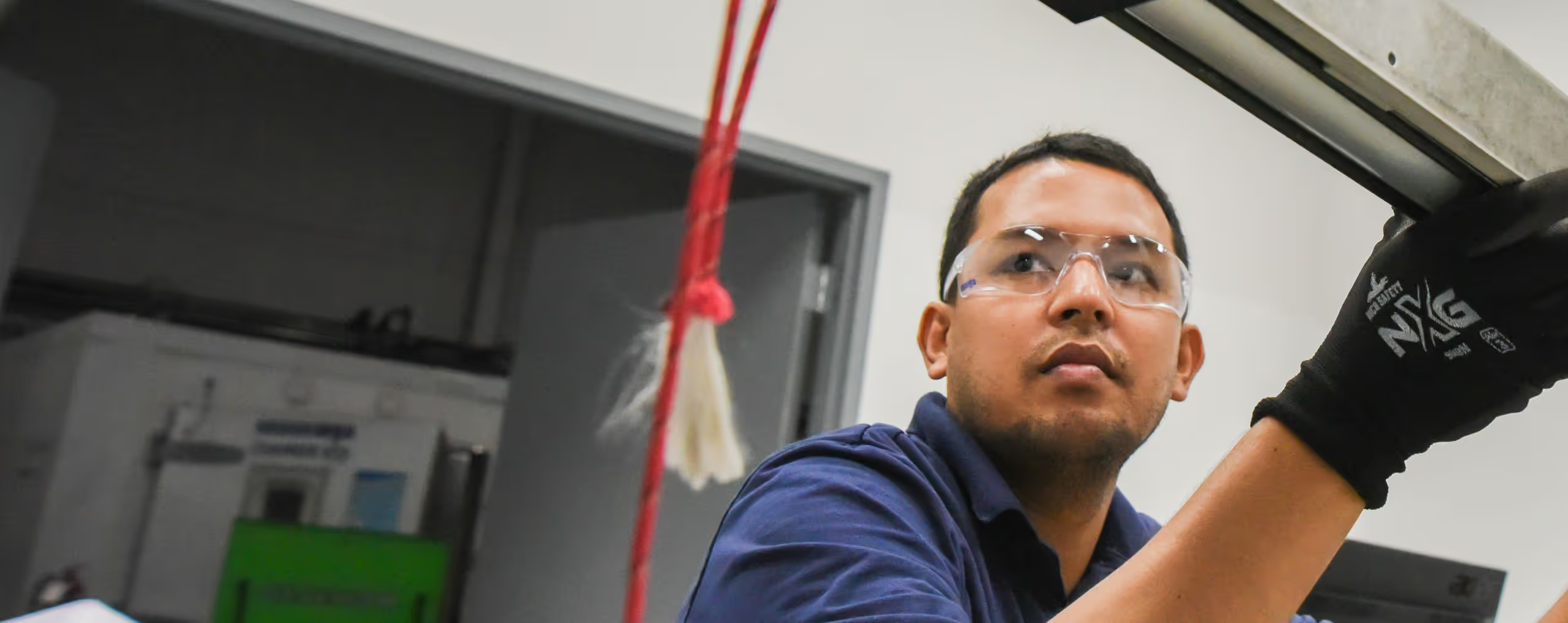
Ready to Get Started?
Let's discuss your testing needs and how MGA can help. Our team is ready to provide the expertise and solutions you're looking for.
